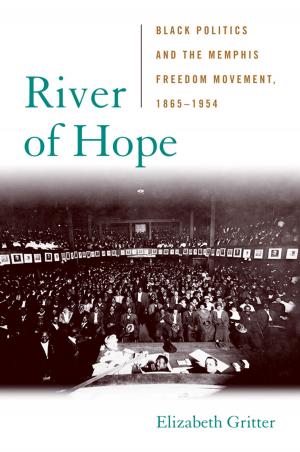| Author: | Raymond Bial | ISBN: | 9780813129242 |
| Publisher: | The University Press of Kentucky | Publication: | September 12, 2010 |
| Imprint: | The University Press of Kentucky | Language: | English |
| Author: | Raymond Bial |
| ISBN: | 9780813129242 |
| Publisher: | The University Press of Kentucky |
| Publication: | September 12, 2010 |
| Imprint: | The University Press of Kentucky |
| Language: | English |
The Shaker faith is estimated to have had a total of fewer than 20,000 members across its 250-year history, yet more than 100,000 people visit the various Shaker villages and museums scattered across the eastern United States every year. We are still fascinated with the world of the Shakers, and authentic examples of Shaker architecture, furniture, and crafts are prized wherever they remain. In The Shaker Village, author and photographer Raymond Bial brings readers the history of the Shaker religion and an examination of the Shaker way of life, which was based on cooperation and self-sufficiency. Each Shaker village was built with the goal of creating a heaven on earth for its inhabitants. The Shaker people were among the first in America to apply science and new learning directly to traditional farming and homekeeping. They invented or improved significantly upon designs of many farm and household items, including some still used today: the flat broom, the slotted spoon, the circular saw, and the idea of selling gardening seeds in packets. Although each Shaker community was self-supporting, the Shakers' success at applying their core values-simplicity, utility, and tranquility-carried Shaker villages to a point of abundance: they were able to export their beautiful furniture, delicious foods, and superior wares to the outside world, where they have been appreciated ever since. The Shaker Village is generously illustrated with Bial's evocative photographs of buildings and artifacts from the Shaker Village of Pleasant Hill, Kentucky, one of the largest and best-preserved Shaker sites. The Shaker movement reached its peak in the mid-nineteenth century. Membership began to drop with the onset of the Civil War, and as the new promise of industrialization began to take hold in America, Shaker numbers steadily dwindled. Although the Shaker religion has all but departed, The Shaker Village captures a revelatory glimpse of a legacy that still resounds with modern Americans.
The Shaker faith is estimated to have had a total of fewer than 20,000 members across its 250-year history, yet more than 100,000 people visit the various Shaker villages and museums scattered across the eastern United States every year. We are still fascinated with the world of the Shakers, and authentic examples of Shaker architecture, furniture, and crafts are prized wherever they remain. In The Shaker Village, author and photographer Raymond Bial brings readers the history of the Shaker religion and an examination of the Shaker way of life, which was based on cooperation and self-sufficiency. Each Shaker village was built with the goal of creating a heaven on earth for its inhabitants. The Shaker people were among the first in America to apply science and new learning directly to traditional farming and homekeeping. They invented or improved significantly upon designs of many farm and household items, including some still used today: the flat broom, the slotted spoon, the circular saw, and the idea of selling gardening seeds in packets. Although each Shaker community was self-supporting, the Shakers' success at applying their core values-simplicity, utility, and tranquility-carried Shaker villages to a point of abundance: they were able to export their beautiful furniture, delicious foods, and superior wares to the outside world, where they have been appreciated ever since. The Shaker Village is generously illustrated with Bial's evocative photographs of buildings and artifacts from the Shaker Village of Pleasant Hill, Kentucky, one of the largest and best-preserved Shaker sites. The Shaker movement reached its peak in the mid-nineteenth century. Membership began to drop with the onset of the Civil War, and as the new promise of industrialization began to take hold in America, Shaker numbers steadily dwindled. Although the Shaker religion has all but departed, The Shaker Village captures a revelatory glimpse of a legacy that still resounds with modern Americans.















